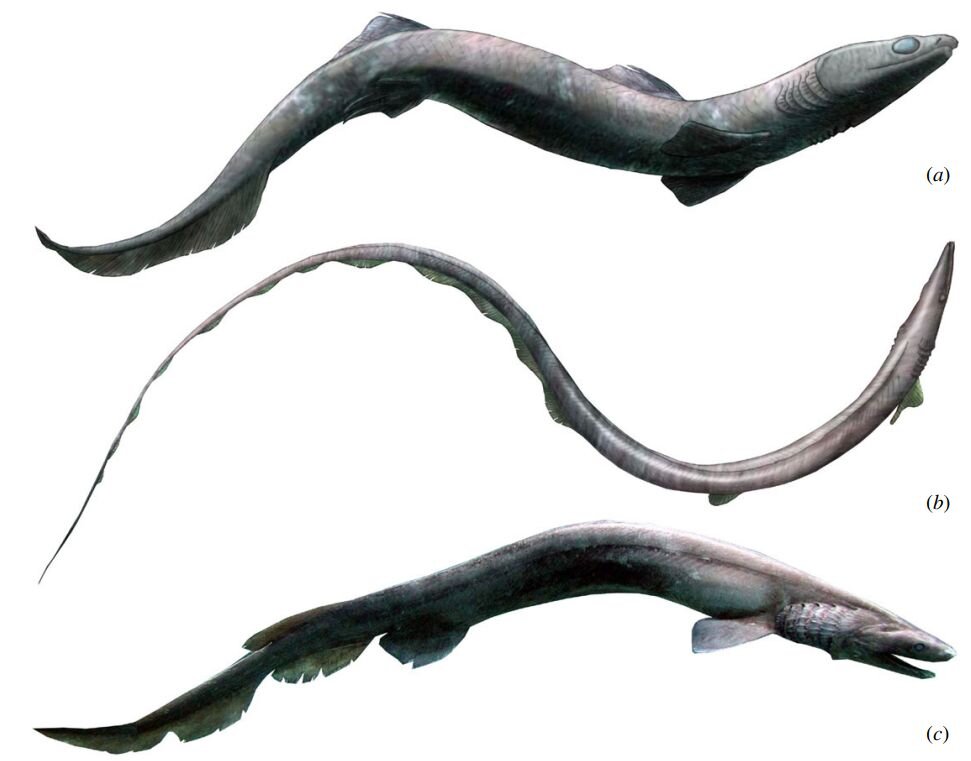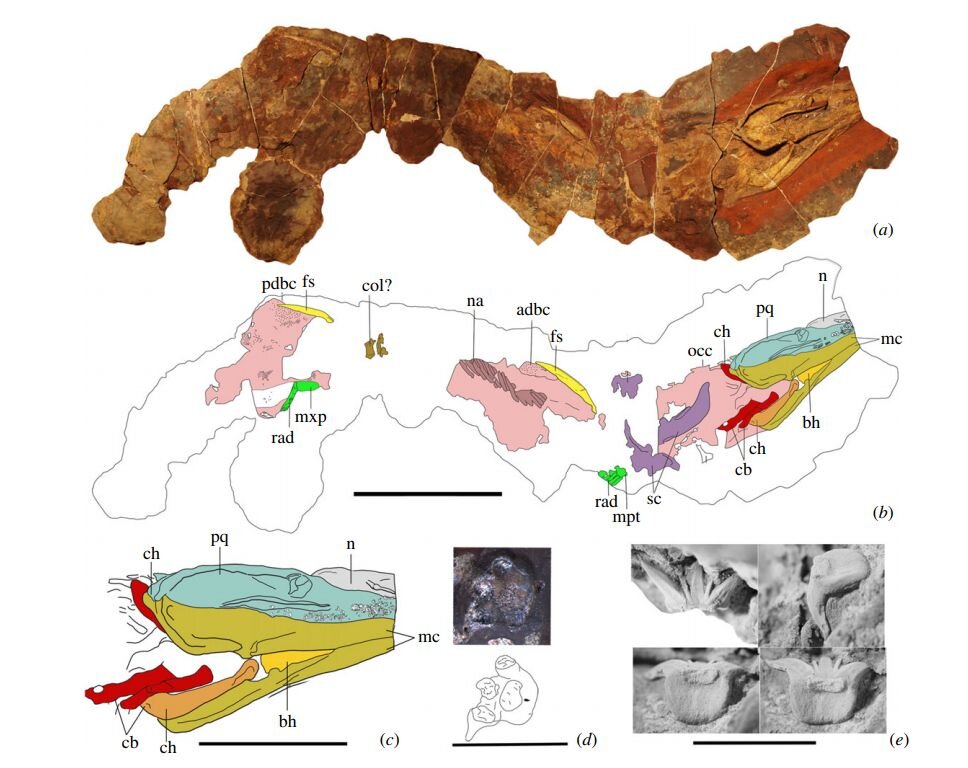@WFS,World Fossil Society, Riffin T Sajeev, Russel T Sajeev
An international team of researchers has found the first skeletal remains of Phoebodus—an ancient shark—in the Anti-Atlas Mountains in Morocco. In their paper published in Proceedings of the Royal Society B, the group describes the fossil and compares it to a modern shark and fish.

Possible body reconstruction of (a) P. saidselachus sp. nov., Late Devonian, (b) T. gracia [11], Early Carboniferous, and (c) picture of C. anguineus [44], Recent. Credit: (c) Proceedings of the Royal Society B: Biological Sciences (2019). DOI: 10.1098/rspb.2019.1336
The shark fossil was found in a mountainous region of Morocco that had once been a shallow sea basin. The researchers also found several skulls and parts of another species of Phoebodus at the same site. Testing of the material in which the shark remains were fossilized revealed that the specimens were approximately 370 million years old. Prior to the find, the only evidence of Phoebodus was three teeth. The researchers note that Phoebodus went extinct in an early part of the Carboniferous—a very long time before many of its features evolved in other modern sea creatures.

Phoebodus saidselachus sp. nov., (a–d) PIMUZ A/I 4712 and (e) PIMUZA/I 4656. (a) Ferruginous nodule containing cranial and postcranial remains; (b) drawing, scale bar, 200 mm; (c) detail of visceral skeleton, scale bar, 100 mm; (d) tooth, scale bar, 5 mm; (e) tooth in labial, aboral, baso-lateral and linguo-basal views, scale bar, 10 mm. adbc, anterior dorsal basal cartilage; bh, basihyal; cb, ceratobranchial; ch, ceratohyal; col, cololite; fs, fin spine; mc, Meckel`s cartilage; mpt, metapterygium; n, neurocranium; na, neural arches; pdbc, posterior dorsal basal cartilage; pq, palatoquadrate; rad, radials; sc, scapulacoracoid. (Online version in colour.). Credit: (c) Proceedings of the Royal Society B: Biological Sciences (2019). DOI: 10.1098/rspb.2019.1336
In studying the fossilized skeleton, the researchers were able to see that when alive, the shark had a long, thin body (almost like an eel), a flat skull and a long jaw. They noted that it bore a striking resemblance to the modern frilled shark, though the two are not related. The teeth, in particular, were very similar—round and pointy and inward-turning, rather than the more familiar serrated edges. Such sharks tend to grab prey and hold on to it like a bulldog and then swallow it whole. The researchers suggest the resemblance between the ancient shark and the modern shark may give researchers some ideas on how Phoebodus hunted. They also note that the ancient shark resembles the modern gar, as well. And while it is a fish and not a shark, it, too, might shed some light on how the ancient shark hunted.
Source: Article by Bob Yirka , Phys.org
@WFS,World Fossil Society, Riffin T Sajeev, Russel T Sajeev



 November 5th, 2019
November 5th, 2019  Riffin
Riffin  Posted in
Posted in  Tags:
Tags: 